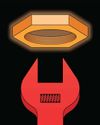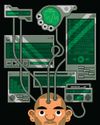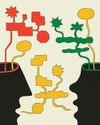
The Chinese researcher He Jiankui was jailed for creating customized babies. Some observers argue that the real problem wasn't him–it was the lure of technology.
He Jiankui, a young Chinese scientist known to his American colleagues as JK, dreamed of remaking humanity by exploiting the emergent technology of gene editing. He had academic polish, and an aptitude for securing institutional support. As a student, he had left China for the United States, where he did graduate work in physics at Rice and a postdoc in a bioengineering lab at Stanford. At the age of twenty-eight, he was recruited into a prestigious Chinese government program for foreign-educated talent, and was offered a founding position in the biology department of the Southern University of Science and Technology.
SUSTech was a newly created research institute in Shenzhen, a city in the midst of a biotech boom. JK, who arrived in 2012, likened Shenzhen’s startup culture to that of Silicon Valley—bold creativity was encouraged, and there was plenty of capital on hand. With colleagues from his lab, he often held brainstorming sessions at a café near campus, delineating his plans. In the first ten years, he would tackle a variety of genetic diseases; in the ten years after that, he’d extend the human life span to a hundred and twenty years. In a PowerPoint that he presented at the café, he wrote, “As a result of promoting genome editing, humanity is smarter, stronger, and healthier. Humanity enters an age of controlling destiny.”
この記事は The New Yorker の September 11, 2023 版に掲載されています。
7 日間の Magzter GOLD 無料トライアルを開始して、何千もの厳選されたプレミアム ストーリー、9,000 以上の雑誌や新聞にアクセスしてください。
すでに購読者です ? サインイン
この記事は The New Yorker の September 11, 2023 版に掲載されています。
7 日間の Magzter GOLD 無料トライアルを開始して、何千もの厳選されたプレミアム ストーリー、9,000 以上の雑誌や新聞にアクセスしてください。
すでに購読者です? サインイン

ART OF STONE
\"The Brutalist.\"

MOMMA MIA
Audra McDonald triumphs in \"Gypsy\" on Broadway.

INTERNATIONAL AFFAIRS
\"Black Doves,\" on Netflix.

NATURE STUDIES
Kyle Abraham's “Dear Lord, Make Me Beautiful.”

WHAT GOOD IS MORALITY?
Ask not just where it came from but what it does for us

THE SPOTIFY SYNDROME
What is the world's largest music-streaming platform really costing us?

THE LEPER - LEE CHANGDONG
. . . to survive, to hang on, waiting for the new world to dawn, what can you do but become a leper nobody in the world would deign to touch? - From \"Windy Evening,\" by Kim Seong-dong.

YOU WON'T GET FREE OF IT
Alice Munro's partner sexually abused her daughter. The harm ran through the work and the family.

TALK SENSE
How much sway does our language have over our thinking?

TO THE DETECTIVE INVESTIGATING MY MURDER
Dear Detective, I'm not dead, but a lot of people can't stand me. What I mean is that breathing is not an activity they want me to keep doing. What I mean is, they want to knock me off. My days are numbered.